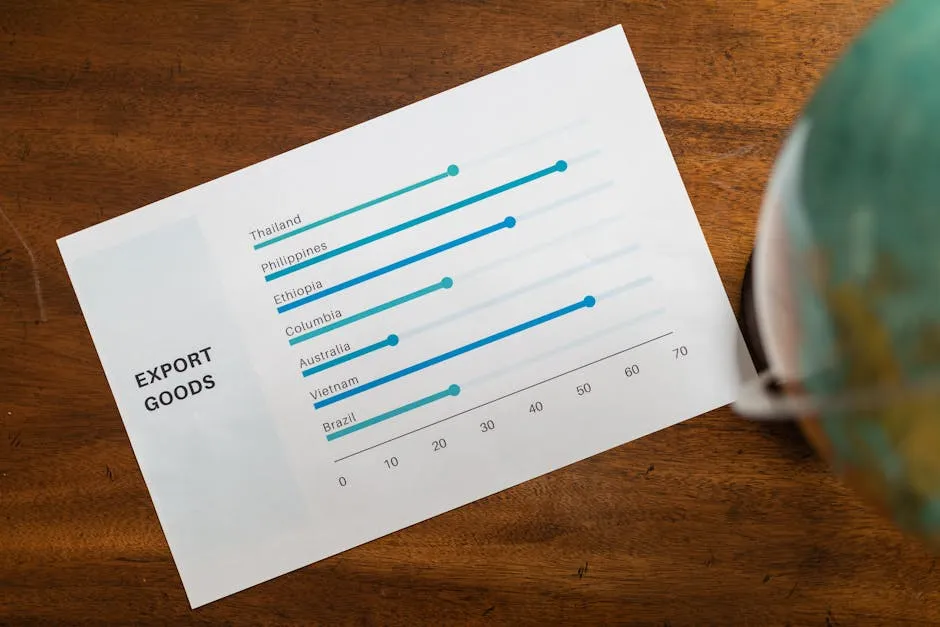Introduction
Univariate statistics is the simplest yet most powerful form of data analysis. “Uni” means one, so we’re talking about analyzing one variable at a time. This approach is crucial because it lays the groundwork for more complex analyses. Imagine trying to build a house without a solid foundation. It wouldn’t stand for long!
This section will introduce you to the key concepts of univariate statistics, such as measures of central tendency and variability. You’ll also learn how to summarize data effectively. By the end, you’ll feel confident in your ability to analyze and interpret single-variable data.
We’ll cover essential terms like mean, median, and mode. You’ll discover how each of these measures contributes to our understanding of data. Plus, we’ll touch on visualizations, which can turn mundane data into eye-catching stories. Get ready to unlock the secrets of univariate statistics!
For those who want a deep dive into statistics, consider reading “The Art of Statistics: Learning from Data” by David Spiegelhalter. This book will not only help you understand the concepts but also provide a witty perspective on how to interpret data effectively. Don’t miss out!

What is Univariate Statistics?
Definition and Importance
Univariate statistics is all about analyzing one variable. It’s like being at a party, where each guest represents a different variable. At a univariate party, you only focus on one guest at a time. This means you won’t be asking how they interact with others. Instead, the goal is to summarize and describe their unique characteristics.
Univariate analysis plays a vital role in statistics. It helps us make sense of data by providing insights into its distribution and general behavior. This type of analysis is foundational for understanding more complex relationships between variables. Without grasping the single-variable data, we risk building shaky conclusions when we move on to more complex analyses.
Moreover, univariate statistics helps us identify trends and patterns. For instance, we can determine if a dataset is skewed to the left or right, or if it has outliers. These insights are invaluable for decision-making in various fields, from healthcare to marketing.
Univariate analysis includes descriptive statistics, which summarize the data. This involves calculating metrics like the mean, median, and mode. Each of these measures provides a unique perspective on the data. You’ll also encounter measures of dispersion, such as range and standard deviation, which tell you how spread out the data is.
Understanding the mean is fundamental in statistics. For a detailed explanation, check out what does mean identically distributed in statistics.
In summary, univariate statistics is the bread and butter of data analysis. It allows us to understand individual variables before diving into the complexities of relationships between them. In the sections that follow, we’ll break down the characteristics of univariate data, giving you the tools needed to tackle any dataset with confidence.
If you’re looking for a great introduction to statistics, “Statistics for Dummies” by Deborah J. Rumsey is a fantastic resource. It’s packed with easy-to-understand explanations and practical examples, making statistics less daunting and more approachable.

Characteristics of Univariate Data
Univariate data refers to data that focuses on a single variable. Picture a measuring tape that only tracks one dimension at a time—height, weight, or test scores. Each observation falls into a single category, making it easier to analyze.
There are different types of variables within univariate data:
- Continuous Variables: These can take any value within a range. For example, height can be 170.5 cm or 170.6 cm. The possibilities are endless!
- Discrete Variables: These consist of distinct, separate values. Think of the number of students in a classroom. You can’t have 25.7 students—only whole numbers count here.
- Categorical Variables: These variables represent different categories or groups. Examples include gender, colors, or types of cuisine. Each category can be counted, but they don’t have an inherent numerical value.
Understanding these types of variables is essential for data analysis. By categorizing data correctly, we can select appropriate statistical methods for analysis.
For instance, if you’re analyzing test scores (continuous data), you might calculate the mean and standard deviation. Conversely, if you’re looking at the number of students in a classroom (discrete data), you may create a frequency distribution.
In summary, univariate data helps simplify analysis by focusing on one variable at a time. Recognizing the type of data you’re working with can make a world of difference in how you interpret results and present findings. Stick around; we’ll dive deeper into how to analyze this data effectively in the following sections!
Univariate Analysis Methods
Descriptive Statistics
Descriptive statistics is the superhero of data analysis! Its primary purpose? To summarize and describe data in a way that makes sense. Think of it as the friendly guide who helps you navigate through numbers, making them less intimidating.
When we talk about descriptive statistics, we focus on two main concepts: measures of central tendency and measures of dispersion.

Measures of Central Tendency
These measures help us understand the center of our data. The most common are the mean, median, and mode.
- Mean: This is your classic average. To calculate it, you simply add all values together and divide by the number of values. For example, if you have test scores of 80, 90, and 100, the mean is (80 + 90 + 100) / 3 = 90.
- Median: This is the middle value in your dataset when arranged in order. If you have test scores of 80, 90, and 100, the median is 90. However, if you have an even number of scores, like 80, 90, 100, and 110, the median would be (90 + 100) / 2 = 95.
- Mode: The mode is the most frequently occurring value. If your test scores are 80, 90, 90, and 100, the mode is 90.
Each of these measures tells a different story about your data. The mean can be influenced by outliers, while the median provides a better central value in skewed distributions. The mode is particularly useful for categorical data.
Measures of Dispersion
Now that we’ve settled on where the center is, let’s talk about how spread out the data is. This is where measures of dispersion come into play: range, variance, and standard deviation.
- Range: This is the simplest measure. It’s just the difference between the highest and lowest values. So, if your test scores are 80 and 100, the range is 100 – 80 = 20.
- Variance: This measure tells us how much the values in a dataset differ from the mean. To calculate it, you subtract the mean from each data point, square the result, and then average those squared differences.
- Standard Deviation: This is the square root of variance and provides a measure of dispersion in the same units as the data. A low standard deviation means that the values tend to be close to the mean, while a high standard deviation indicates a wide spread of values.
For example, consider two sets of test scores: {80, 90, 100} and {70, 90, 110}. Both have the same mean of 90, but their standard deviations differ. The first set has a smaller standard deviation, indicating that scores are closely clustered around the mean, while the second has a larger standard deviation, indicating more variability.
In summary, descriptive statistics allows us to summarize data effectively. By using measures of central tendency and dispersion, we can gain valuable insights into the dataset’s core characteristics.
Speaking of core characteristics, if you’re interested in digging deeper into the world of data science, you might want to check out “Data Science for Business” by Foster Provost and Tom Fawcett. This book offers a practical introduction to the principles of data science, making it a must-read for aspiring data analysts!

Frequency Distributions
Frequency distributions are like the life of the party—they help us understand how often different values occur in our data. They provide a clear picture of the distribution of a variable, revealing patterns and trends.
A frequency distribution table displays the number of observations for each unique value or category within a dataset. Let’s say we have the ages of a group of people: 20, 22, 22, 24, 25, and 30. A frequency distribution table would look like this:
- Age | Frequency
- 20 | 1
- 22 | 2
- 24 | 1
- 25 | 1
- 30 | 1
Creating this table helps us quickly see how many people fall into each age category.
Cumulative and Percentage Distributions
Now, let’s take this a step further with cumulative and percentage distributions. A cumulative frequency distribution shows the total number of observations up to and including a certain value. In our age example, the cumulative frequency table would look like this:
- Age | Cumulative Frequency
- 20 | 1
- 22 | 3
- 24 | 4
- 25 | 5
- 30 | 6
This table tells us that three people are aged 22 or younger.
Percentage distributions take this a bit further, expressing the frequency as a percentage of the total. For our age example, the percentage distribution would be:
- Age | Percentage
- 20 | 16.67%
- 22 | 33.33%
- 24 | 16.67%
- 25 | 16.67%
- 30 | 16.67%
This tells us, for instance, that 33.33% of our sample is aged 22.
In conclusion, frequency distributions are essential for summarizing and understanding data. They provide valuable insights into the distribution of values, allowing us to identify trends and patterns that might not be immediately obvious. By utilizing cumulative and percentage distributions, we can gain even deeper insights into the data’s characteristics.

Graphical Representations
Visualizing univariate data is like putting your favorite dish on display at a buffet—it’s all about making it appealing and easy to digest! Charts and graphs can turn raw numbers into eye-catching visuals, revealing patterns and trends at a glance. So, let’s explore the significance of these graphical representations and the different types you can use.
The Significance of Visualizing Univariate Data
Graphs and charts help simplify complex data. They allow for quick comparisons and can highlight anomalies or trends that might otherwise go unnoticed. When you present data visually, you engage your audience more effectively. Instead of drowning in a sea of numbers, they can grasp insights instantly. Remember, a picture is worth a thousand words, or in this case, maybe even a million data points!
Types of Charts and Graphs
- Histograms: A histogram is your go-to for continuous data. It groups data into bins, showing the frequency of observations within each range. Imagine a big bowl of jellybeans sorted by color. Each color represents a bin, and the height of the jellybean towers indicates how many of each color there are. This makes it easy to see the distribution of values.
- Bar Charts: Bar charts are perfect for categorical data. Each category is represented by a bar whose height reflects the frequency or proportion of that category. Think of it as a game of Tetris, where each block represents a different category, and you stack them to see which one is the tallest.
- Pie Charts: A pie chart slices your data into wedges to show proportions. Each slice represents a category’s contribution to the whole, like a delicious pizza divided among friends. But beware! Too many slices can make your chart look cluttered, like trying to fit too many toppings on one pizza.
- Box Plots: Box plots, or whisker plots, give you a great summary of your data’s distribution. They show the median, quartiles, and potential outliers. Picture a box with “whiskers” extending to show the range of your data. This chart helps you see the spread and skewness of your dataset.
In summary, graphical representations are essential tools in univariate analysis. They transform data into visual narratives, making it easier to understand and interpret. Whether you’re using a histogram, bar chart, pie chart, or box plot, each type serves a unique purpose. So, next time you tackle a dataset, remember to give it the visual flair it deserves!

Case Studies
Univariate analysis is not just an academic concept; it has real-world applications that can lead to significant insights in various fields. Let’s explore some compelling case studies from healthcare, business, and education, highlighting how univariate statistics have made a difference.
In the healthcare sector, a notable example comes from a study analyzing patient recovery times after knee surgery. Researchers collected data on recovery times as a single variable. By calculating the mean, median, and mode of recovery times, they discovered that while most patients recovered within three months, a small subset took significantly longer. This insight prompted the hospital to investigate factors leading to protracted recovery. They implemented targeted rehabilitation programs for those at risk, ultimately improving patient outcomes and satisfaction rates.
Switching gears to the business realm, consider a retail company analyzing sales data. They focused exclusively on the sales volume of a popular product over the past year. By employing univariate analysis, they identified not only the peak sales months but also the slowest periods. This information was invaluable; the company adjusted its inventory and marketing strategies to boost sales during the off-peak months. As a result, they increased overall revenue by 15% within a year, showcasing the power of understanding a single variable.
Education also benefits from univariate statistics. A school district conducted an analysis of student test scores in a standardized math assessment. By examining the mean, median, and standard deviation of scores, educators identified significant disparities among different schools. This data-driven insight led to tailored instructional interventions geared towards improving math performance in underperforming schools. The result? A noticeable increase in average test scores district-wide, demonstrating how a focus on one variable can spark meaningful change.
These examples illustrate the versatility of univariate analysis. Whether in healthcare, business, or education, understanding a single variable can unlock new pathways for improvement. By summarizing data effectively, stakeholders can make informed decisions that lead to enhanced outcomes.

If you’re curious about real-world applications of statistics in sports, you should definitely check out “Moneyball: The Art of Winning an Unfair Game” by Michael Lewis. This book dives into how data transformed baseball and can inspire you to think differently about statistics in any field!
FAQs
What is the difference between univariate and multivariate analysis?
Univariate analysis focuses solely on one variable. Think of it as a solo performance at a concert—just one star taking the stage! In contrast, multivariate analysis looks at the relationships between two or more variables. It’s like a jam session, where multiple musicians create harmony together. Univariate helps summarize data, while multivariate digs into interactions and correlations.
What are some common mistakes to avoid in univariate analysis?
When diving into univariate analysis, avoid these pitfalls: Ignoring outliers: Outliers can skew results. Always check for them! Misinterpreting the mean: The mean can be misleading in skewed distributions. Consider using the median. Overlooking data visualization: Graphs can reveal patterns that numbers alone may hide. Charts are your friends. Failing to check assumptions: Ensure your data meets the assumptions for the statistical methods you choose. Ignoring this can lead to incorrect conclusions.
How can univariate statistics inform business decisions?
Univariate statistics can be a game-changer for businesses. For instance, consider a retail store analyzing sales data for a specific product. By calculating the mean sales volume over several months, management identifies peak sales periods. This insight allows them to optimize inventory and marketing strategies, ultimately increasing sales. Think of it as tuning a guitar—each adjustment brings you closer to the perfect sound!
What tools are best for performing univariate analysis?
Several tools can help you conduct univariate analysis effectively. Here are some popular options: Excel: Great for beginners, it offers functions for basic statistics and easy chart creation. R: A powerful programming language for statistical computing and graphics, ideal for more complex analyses. Python: Libraries like Pandas and Matplotlib make it easy to handle data and create visualizations. SPSS: Widely used in social sciences, SPSS provides user-friendly options for statistical analysis.
Can univariate statistics be applied in machine learning?
Absolutely! Univariate statistics play a key role in machine learning. They’re crucial for feature selection and data preprocessing. By analyzing individual features, you can identify which variables contribute most to your model. This helps simplify your dataset, reducing complexity while retaining essential information. In short, univariate statistics help you choose the best ingredients for your statistical recipe!
Conclusion
In summary, univariate statistics serve as the bedrock for data analysis. By concentrating on a single variable, this approach allows us to summarize and describe data effectively. We’ve explored its definition, importance, and various characteristics, emphasizing how crucial it is for foundational analysis.
Univariate statistics not only help in understanding the distribution and behavior of individual variables but also pave the way for more complex analyses. By mastering these principles, you can make more informed decisions based on robust data insights. For those intrigued by the world of statistics, further reading on tips for effective data analysis in economics and statistics can expand your understanding. Topics like correlation, regression, and advanced statistics await those who wish to delve deeper into the rich universe of data analysis.
If you’re interested in a comprehensive view of statistical methods, consider checking out “Practical Statistics for Data Scientists” by Peter Bruce and Andrew Bruce. This book is a fantastic resource, perfect for those looking to apply statistics in the data science realm.
So, whether you’re a budding analyst or a seasoned statistician, remember that univariate analysis is your trusty sidekick. It equips you with the essential tools to tackle data head-on, revealing insights that can transform understanding into action.
Please let us know what you think about our content by leaving a comment down below!
Thank you for reading till here 🙂
All images from Pexels




